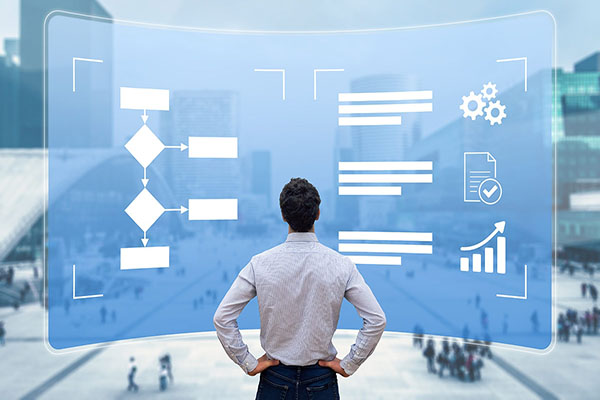Smart building platforms are advanced, integrated systems that manage and automate building functionalities beyond what regular Building Management Systems (BMS) can do. These platforms represent a step forward in building technology, combining the Internet of Things (IoT), Artificial Intelligence (AI), and significant data analytics. They link to current BMS and improve them by adding layers of intelligence, adaptability, and interactivity, resulting in a more connected and responsive environment.
Smart Building Platforms: Basic Principles and Enhanced Integration with BMS. While a building management system (BMS) primarily manages and monitors the mechanical and electrical systems, smart building platforms expand these capabilities. They work smoothly with existing BMS infrastructure, improving its functionality through modern IoT networks and data analytics.
- IoT and Data-Driven Insight: Smart building platforms use IoT networks to enhance traditional BMS systems that lack comprehensive data-gathering capabilities. These networks include a variety of sensors and devices that capture a broader range of data, providing more in-depth insights into building operations.
- Advanced Data Processing: The platforms process and analyze data from BMS and IoT devices using sophisticated algorithms and artificial intelligence. This level of analysis is more advanced than traditional BMS capabilities, allowing for predictive maintenance, energy management, and increased operational efficiency.
- Proactive Automation and Control: Unlike traditional building management systems, smart building platforms actively learn and adapt. They automate building systems such as HVAC, lighting, and security more dynamically, responding proactively to changing conditions and tenant activities.
- User Interaction and Accessibility: These systems provide easy interfaces for both building managers and occupants, and they provide more interaction and control possibilities than traditional BMS. Users can view real-time data, control various building functions, and obtain customized reports via user-friendly dashboards.
- Learning and Adaptation: Smart building platforms are always learning from the data they collect, changing their operations to increase efficiency and occupant comfort. This adaptive learning capability is a substantial development over standard BMS.
History and Evolution of Smart Building Platforms
- Early Days: Traditional Building Management Systems
BMS emerged in the late twentieth century, with a focus on regulating and monitoring building utilities such as HVAC, lighting, and electrical systems. These systems were reactive, designed to keep established settings, and lacked advanced data analysis or proactive adjustment capabilities. Honeywell’s TDC 2000 and Johnson Controls’ Metasys® in the 1980s and 1990s represent the early stages of BMS.
- Moving Toward Automation and Integration
In the early 2000s, BMS began to turn toward automation and integration, with systems including increasingly complex controls. However, these systems remained highly compartmentalized and lacked broad communication capabilities. Siemens’ Apogee and Schneider Electric’s TAC Vista were created during this period.
- The growth of connection and IoT
With the advancement of IoT technology, buildings began to incorporate a network of sensors and linked devices, significantly boosting data collection capabilities. This era saw increased communication among various building systems and gadgets, opening the door for improved building management. Siemens Desigo and Cisco’s Network Building Mediator were the best examples of this type of platform.
- The Rise of Platforms for Smart Buildings
Smart building platforms evolved as a more advanced solution, building on the foundation of traditional BMS while providing significant advances in data analytics, real-time monitoring, and predictive maintenance. These platforms were created to interface with and improve existing BMS systems, adding levels of intelligence and adaptability.
- The Importance of AI and Advanced Analytics
The combination of AI and machine learning created the possibility for predictive analytics, allowing buildings to anticipate and respond to a variety of demands and conditions proactively. The change to data-driven management enabled more nuanced and effective building operations, resulting in energy savings, increased occupant comfort, and better resource management. The introduction of AI and machine learning into systems like Google Nest and Honeywell Forge marked a big step forward.
Smart Building Platform: Use Cases
Energy-Efficient and Sustainable: Intelligent HVAC systems, automatic lighting, and energy-efficient building materials all contribute to smart building platforms that optimize energy use. They use real-time data to modify energy use in response to occupancy and environmental factors.
Renewable Energy Integration: Buildings such as the Edge in Amsterdam use smart platforms to integrate renewable energy sources, resulting in significant carbon footprint reduction.
Smart Grid Interaction: Smart buildings in urban areas are increasingly interacting with smart grids, helping to balance energy loads and contribute to overall city sustainability.
LEED Certification: The Pixel Building in Melbourne uses a smart building platform to get a high LEED rating by running energy-efficiently.





